Storm Agnes played havoc with maize crops on Wednesday, 27 September. The pictures in this article came from a farmer in Co Kilkenny with over 40ac of maize.
He reported to the Irish Farmers Journal that in some fields, 95% of the maize was down.
Some plants are leaning over at a 45° angle, more were hit in the middle of the plant, while plants were also knocked from the base in some cases, as can be seen in the images with this article.
The storm came as many maize crops were being harvested, and many of those in fields were very nearly ready to harvest.
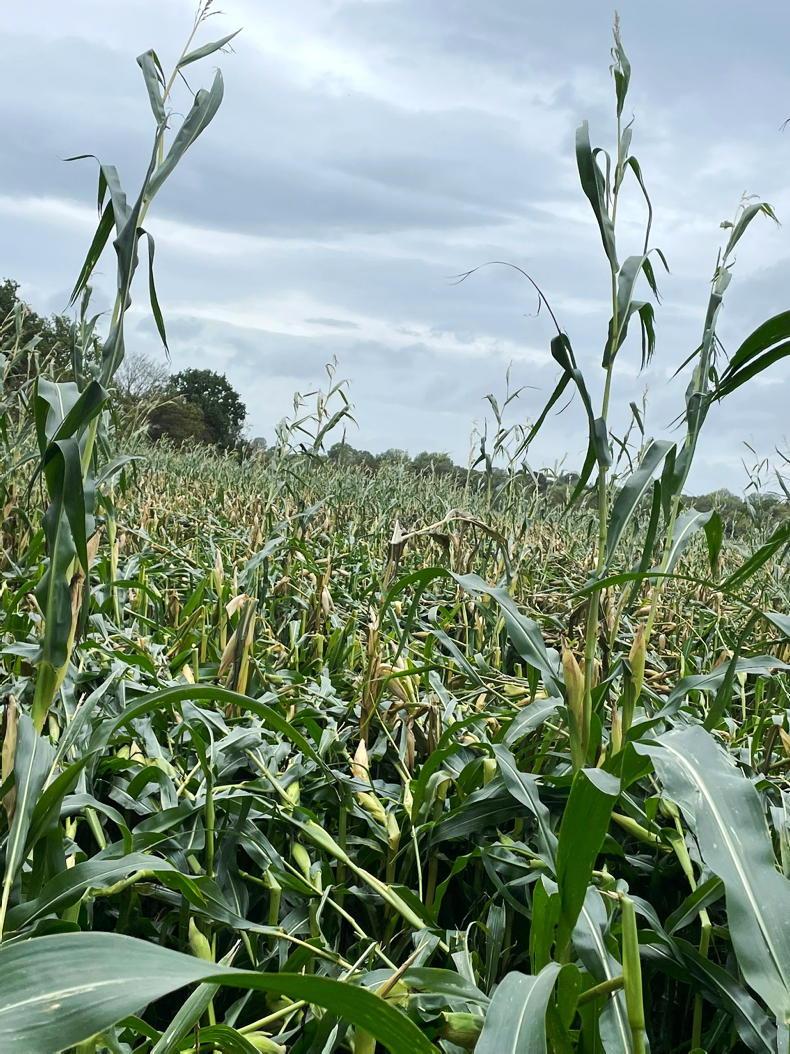
This picture shows how far down the stem the maize was knocked.
Some crops also have a few more weeks to go before being ready to cut, and quality will now be impacted where crops are down.
Harvesting
While quality will be impacted, a huge problem facing farmers now is harvesting. As the maize is now broken and leaning over, there is a risk of crop losses and harvest will be slower.
Maize crops across the country were doing very well this year and were taller than usual, which did not help in the strong winds.
Costs were also significantly higher for those who planted under cover, as new biodegradable film was used.
Costs
Total variable costs for maize in the open come in at about €909/ac, according to Teagasc. Film on top of this adds approximately €210/ac.
These costs are before land rental, which is hard to put an estimate on, due to the range in prices farmers are paying, but at €300/ac that brings costs to over €1,400/ac.
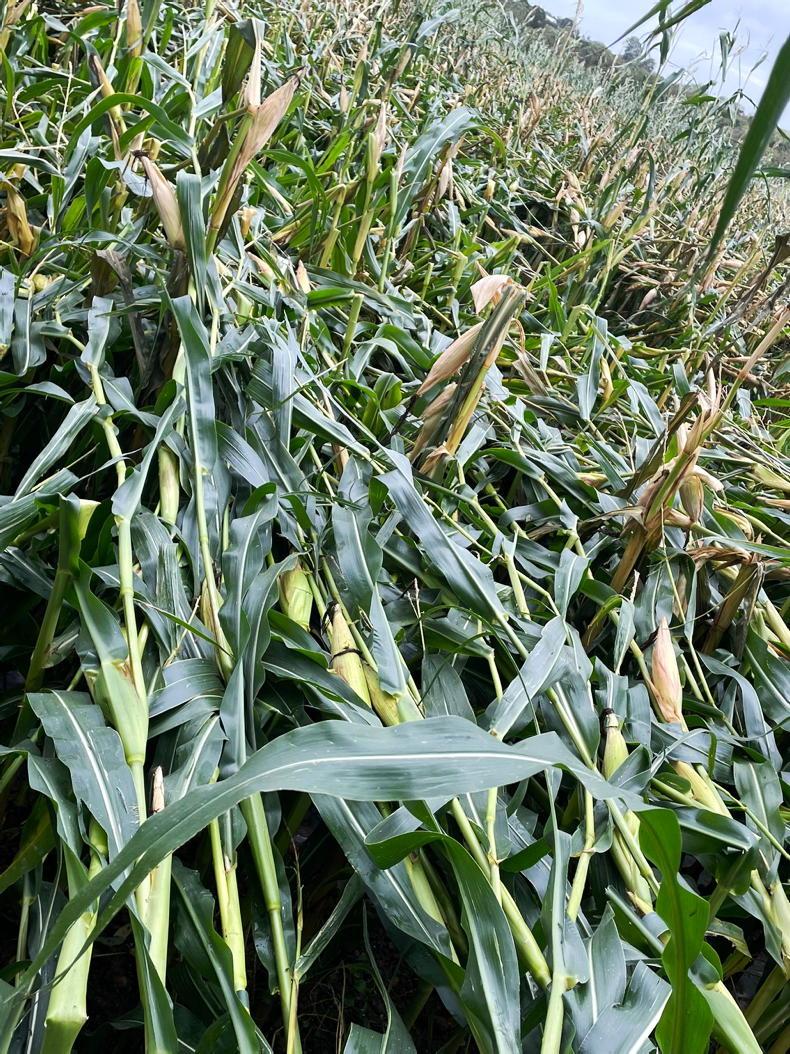
The maize had good cob numbers.
Maize is a high-cost crop and farmers planted approximately 19,300ha this season, almost 3,700ha more than last year.
Tillage farmers have faced a tough year and some still have spring cereals, beans and oilseed rape to cut.
Maize looked like a promising crop this season, but storm damage will now impact on the crops' income.
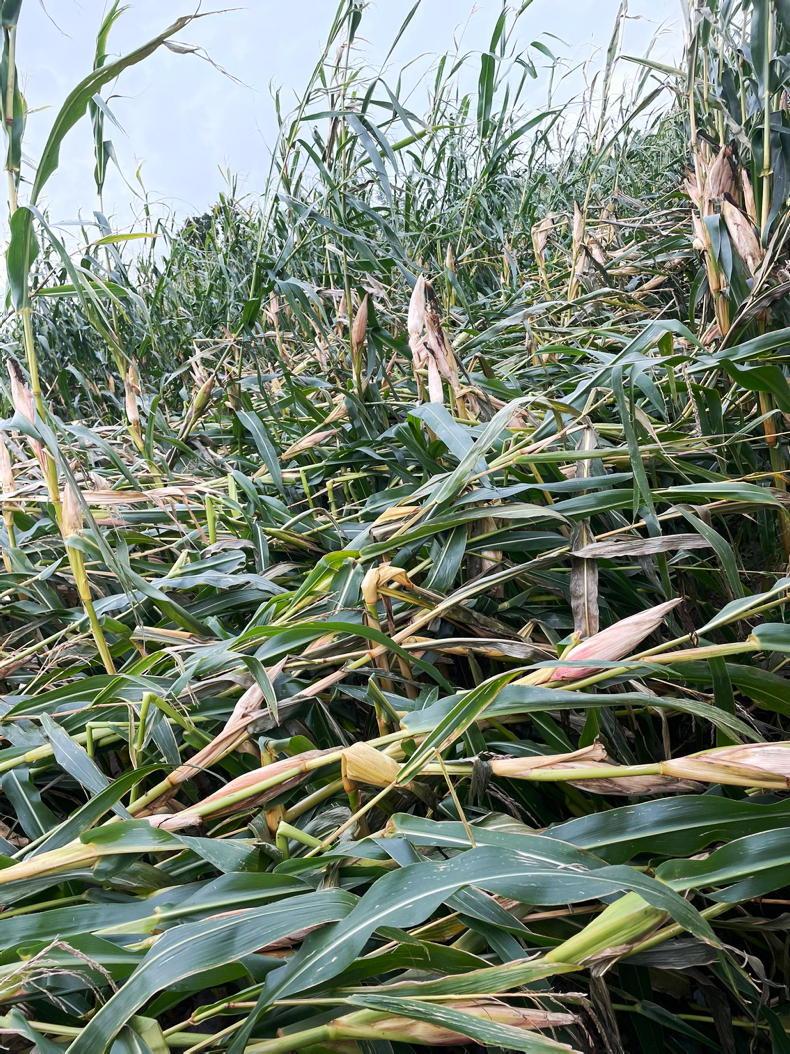
Maize crops across the country were doing very well this year and were taller than usual, which did not help in the strong winds.
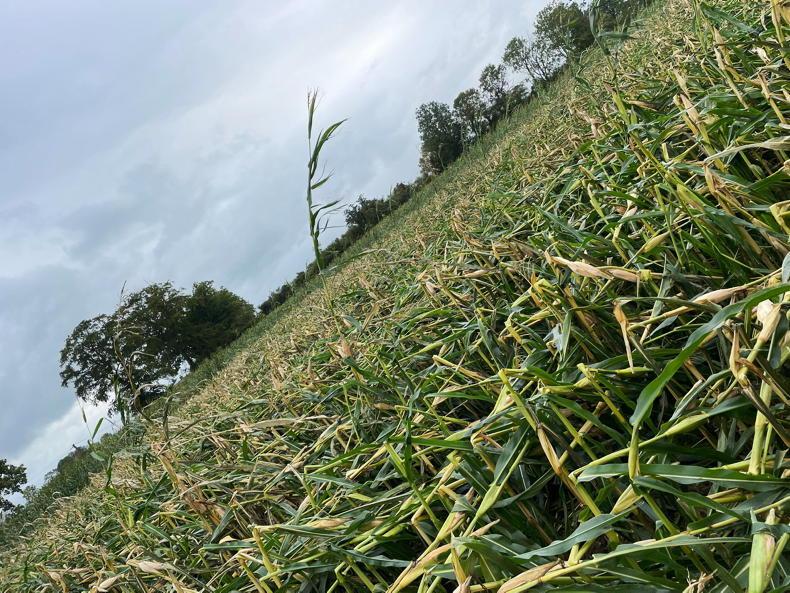
Maize is a high-cost crop and farmers planted approximately 19,300ha this season.
Storm Agnes played havoc with maize crops on Wednesday, 27 September. The pictures in this article came from a farmer in Co Kilkenny with over 40ac of maize.
He reported to the Irish Farmers Journal that in some fields, 95% of the maize was down.
Some plants are leaning over at a 45° angle, more were hit in the middle of the plant, while plants were also knocked from the base in some cases, as can be seen in the images with this article.
The storm came as many maize crops were being harvested, and many of those in fields were very nearly ready to harvest.

This picture shows how far down the stem the maize was knocked.
Some crops also have a few more weeks to go before being ready to cut, and quality will now be impacted where crops are down.
Harvesting
While quality will be impacted, a huge problem facing farmers now is harvesting. As the maize is now broken and leaning over, there is a risk of crop losses and harvest will be slower.
Maize crops across the country were doing very well this year and were taller than usual, which did not help in the strong winds.
Costs were also significantly higher for those who planted under cover, as new biodegradable film was used.
Costs
Total variable costs for maize in the open come in at about €909/ac, according to Teagasc. Film on top of this adds approximately €210/ac.
These costs are before land rental, which is hard to put an estimate on, due to the range in prices farmers are paying, but at €300/ac that brings costs to over €1,400/ac.

The maize had good cob numbers.
Maize is a high-cost crop and farmers planted approximately 19,300ha this season, almost 3,700ha more than last year.
Tillage farmers have faced a tough year and some still have spring cereals, beans and oilseed rape to cut.
Maize looked like a promising crop this season, but storm damage will now impact on the crops' income.

Maize crops across the country were doing very well this year and were taller than usual, which did not help in the strong winds.

Maize is a high-cost crop and farmers planted approximately 19,300ha this season.









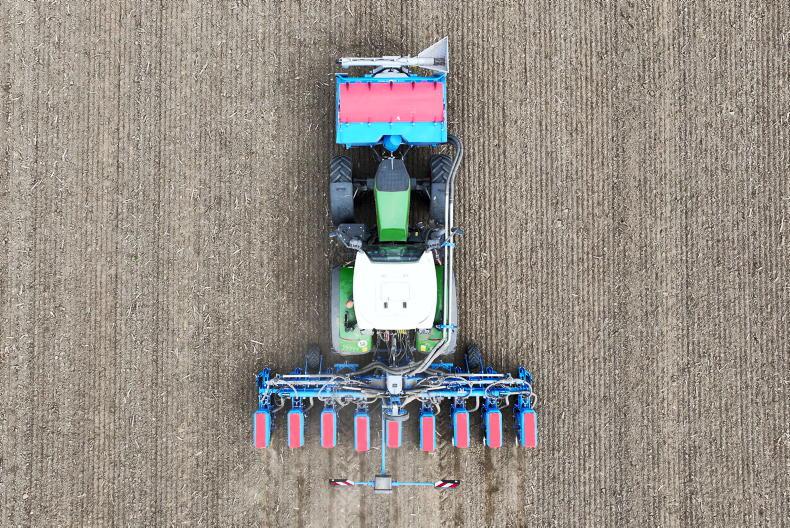

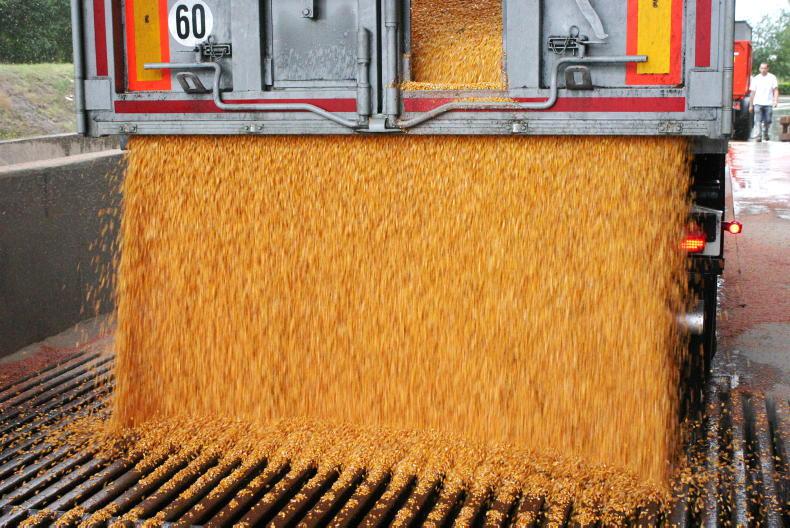

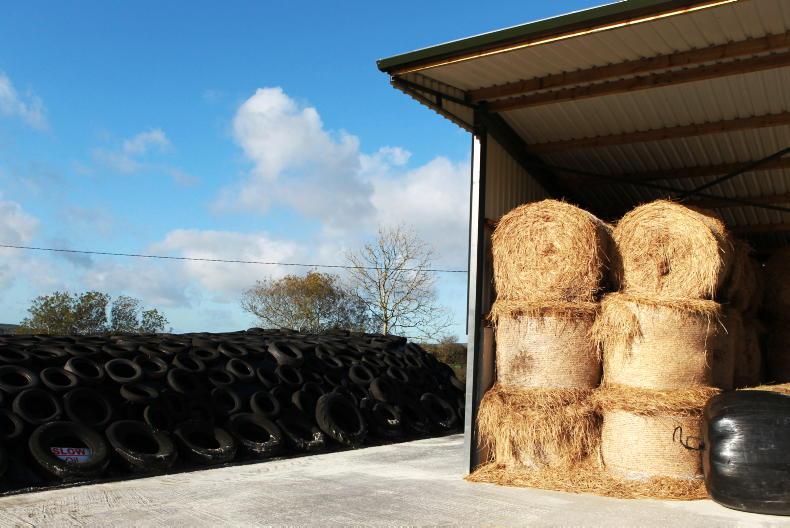
SHARING OPTIONS